Primary navigation
Yellow woodland plants
When you are looking for bluebells in Britain here are some other common flowers you might see.

Alternate-leaved golden saxifrage, Chrysosplenium alternifolium, Somerset. Widespread but absent from much of central England and the extreme south west. It is a low-growing plant of boggy ground in woodlands, by springs and stream-sides. It is easily confused with the more common Opposite-leaved golden saxifrage. See map for more information about its distribution. © H.J. Crouch.
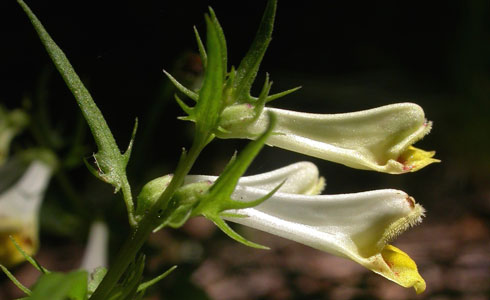
Common cow-wheat, Melampyrum pratense, Kent. Widespread across the UK but scarce in the Midlands. This annual flower is parasitic on the roots of various forest trees and shrubs. The seeds are dispersed by wood ants and it is also the food plant of the very rare Heath Fritillary butterfly. See map for more information about its distribution. © F.J. Rumsey.
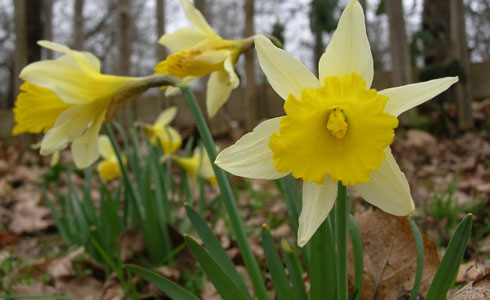
Daffodil, Narcissus pseudonarcissus, Greater London. Widespread but very local in England and east Wales. In many areas it is planted and not native. It is the parent of many ornamental varieties of garden daffodil. See map for more information about its distribution. © M.A. Spencer.

Golden-rod, Solidago virgaurea, Cornwall. Widespread across the British Isles, but scarce in the Midlands of England and central Ireland. See map for more information about its distribution. © M.A. Spencer
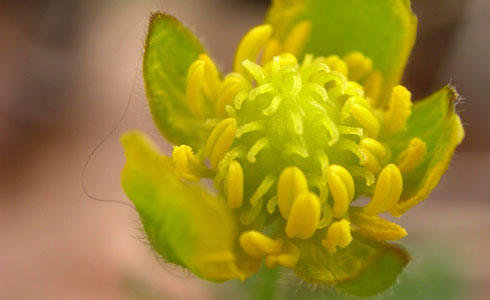
Goldilocks buttercup, Ranunculus auricomus, W. Kent. Widely distributed throughout Britain but never common and easily overlooked. This small flowered buttercup prefers ancient woodlands on calcareous soils. See map for more information about its distribution. © F.J. Rumsey.
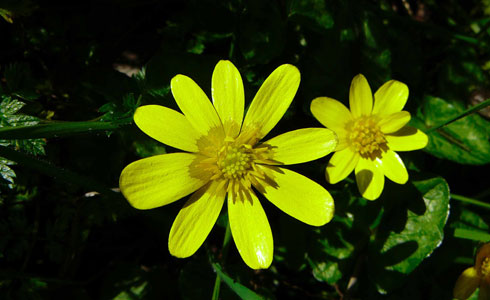
Lesser celandine, Ranunculus ficaria, Greater London. Widespread across most of the UK, except the mountains of Scotland. This plant is also a frequent weed in gardens and may sometimes escape. Some non-native forms have orange flowers. See map for more information about their distribution. © M.A. Spencer.
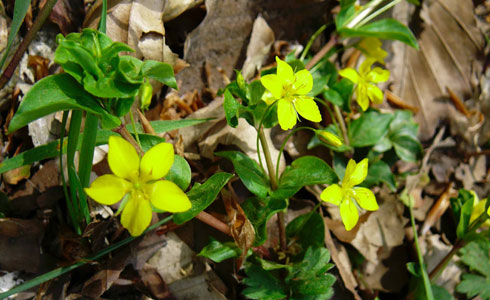
Yellow pimpernel, Lysimachia nemorum, Berks. A widespread species but rather scarce in southern central England around the Washes. It prefers rich woodland soils and more disturbed open areas, such as glades and road-sides.
See mapfor more information about its distribution. © M.A. Spencer.

Primrose, Primula vulgaris, Somerset. Widespread throughout the UK. Hybrids with the garden polyanthus are often found close to where people live. They may have purplish-pink or white yellow-eyed flowers, often with larger blooms. The seed is usually dispersed by ants. See map for more information about their distribution. © H.J. Crouch.

Yellow archangel, Lamiastrum galebodolon, Greater London. Widespread across most of the UK, except northern Scotland. There are variants that have silvery variegation on the leaves and that have escaped from gardens. See map for more information about its distribution. © M.A. Spencer.
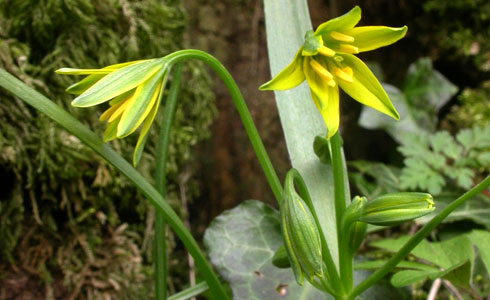
Yellow star of Bethlehem, Gagea lutea, Somerset. Widespread throughout the UK. Hybrids with the garden polyanthus are often found close to where people live. They may have purplish-pink or white yellow-eyed flowers, often with larger blooms. The seed is usually dispersed by ants. See map for more information about its distribution. © H.J. Crouch.
Related information
Toolbox
- Contact and enquiries
- Accessibility
- Site map
- Website terms of use
- © The Trustees of the Natural History Museum, London
- Information about cookies
- Mobile
